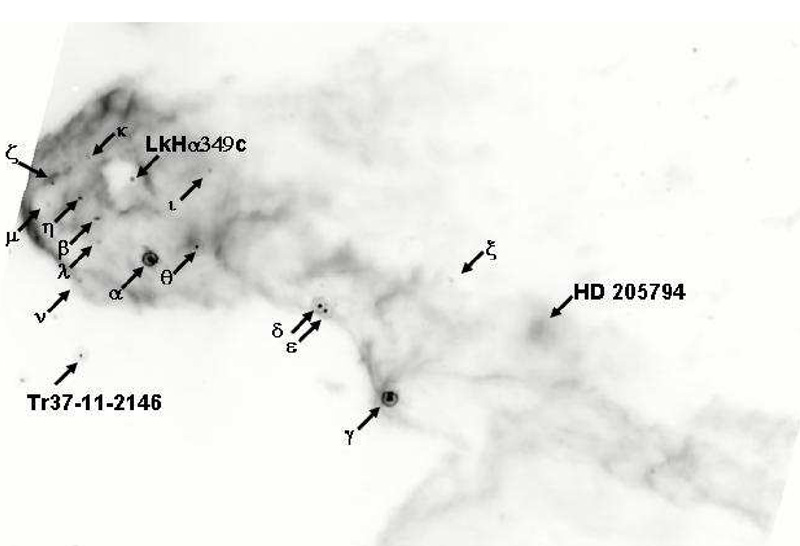
IC 1396A (The Elephant Trunk Nebula) is the most prominent and well-studied of the numerous bright rimmed globules within IC 1396. Bright rimmed globules and their more evolved cousin the cometary globule represent fascinating dynamic structures formed by the interplay of cold molecular clouds and hot ionizing stars. Typically the head of the globule faces a hot O-type star. Intense radiation from the star boils away lower density gas from the head. The evaporated rim of gas becomes ionized by the stars ultraviolet flux forming a bright glowing rim we associate with many of these globules including the case of IC 1396A. Intense stellar winds from the ionizing star evaporate gas and dust away from the head forming the "tail" and completing the cometary shape. The globules are known to be the birthplace of low mass stars. Stars form within the globules by the mechanism known as "radiation driven implosion". This process occurs when ultraviolet flux from a hot star compresses surviving clumps of cold molecular gas eventually causing collapse and core formation within the dense compact clouds. Lower and intermediate mass stars ultimately form from the compact gas and dust within the globules.
Globules can be considered small scale models of star formation. The compact dust and gas clouds produce stars on a smaller scale but by similar mechanisms to much larger molecular clouds. Visible within the center of the globule are several young glowing stars and a small HII region within a hollowed out cavity. Two conspicuous young bright stars are visible within the excavated cavity and are designated LkHa349a and LkHa349c. LkHa349a, the brighter star, is a 3 solar mass F type star which is thought to have cleared the cavity by way of energetic outflows during its protostar phase. Its energy is exciting the small HII cloud and yellowish reflection nebula within the cavity. LkHa349c is 1.5 magnitudes fainter than the component "a" and is at an earlier evolutionary phase as it still possesses a massive accretion disk characteristic of pre-main-sequence stars. At infrared wavelengths a swarm of pre-main-sequence stars become apparent within the compact dust of the globule.
The evolution of a cometary globule occurs in two phases. The first phase involves collapse, compression, and subsequent equilibrium of the cloud driven by photoionization of its surface by the ultraviolet flux of a hot B-type star. The collapse occurs relatively quickly within about 30,000 years followed by a longer transient phase lasting some 100,000 years where the cloud undergoes several radial reexpansions and recompressions. The second phase involves photoevaporation and acceleration of globular material away from the ionizing source forming the "tail" of the globule. The evaporation phase can last a million years or so and ends with the dissolution of the globule.
IC 1396A is sometimes referred to as vdB 142. This is only partially correct as object number 142 (of 158) from van den Bergh's catalog of reflection nebulae refers only to the small reflection nebula within the "elephant trunk" complex. The reflection nebula vdB142 is related to the B3 type star HD239710 projected in front of the globule. The Canadian astronomer Sidney van den Bergh published a catalogue of 158 reflection nebulae in 1966.
